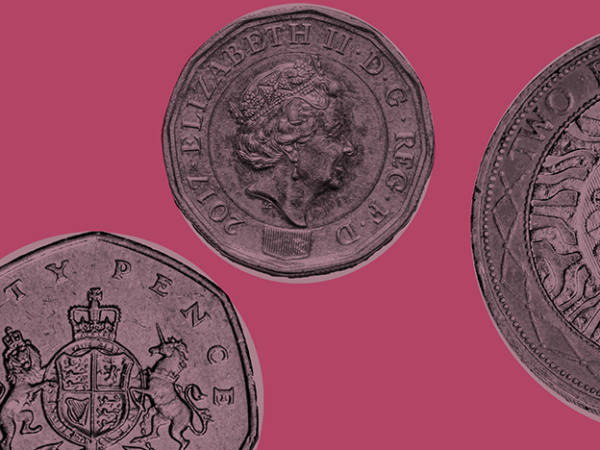True, in Tesco's case it seems incredible that so much scorn has been heaped on the head of Philip Clarke, who had been the chief executive for just three years when he was sacked in July, while so little has been directed at his predecessor, Sir Terry Leahy, who was the boss for 14 years. But that's by the bye.
The latest episodes in Tesco's decline are that the world's most famous investor, Warren Buffett, said his decision to buy a 4 per cent stake in the supermarkets operator was a "huge mistake". This was quickly followed by news that Tesco had taken delivery of its fifth executive jet. Mr Buffett could have chipped in on that one, too. He has strong opinions on executive jets. In the late 1980s, after years of agonising in public, he finally authorised buying one for his Berkshire Hathaway conglomerate - a second-hand jet he promptly named The Indefensible. If one corporate jet is indefensible, what does that make five?
Somewhere in this mess, Tesco's share price sank to an 11-year low and - amongst all the kicking, damning and despairing - the obvious investment question arises: does this mean it's time to buy the stock? Remember, it's axiomatic that the best returns go to those who are willing to buy at the worst moments.
Tesco aside, there is a generic investment proposition at stake: on average, does it pay to buy the shares of any FTSE 100 company if the price falls to an 11-year low? Actually, let's rid ourselves of this 11-year period and substitute one that's intuitively easier to grasp - 10 years. Even so, the proposition is tougher to test than it might appear. Partly that's because equity markets in developed nations have spent much more time rising than falling; that remains the case despite the mixed experience since 2000. As a result, there are never many instances when a stock is at its lowest level for 10 years. Most will be higher even though they may have slumped to several new lows within the period. And to find which stocks would be candidates, we need every instance when this happened during a pre-defined period for a universe of stocks.
That's quite demanding for a database. The best I can find is lists of stocks that trawled a 10-year low during any particular calendar year. From that - with help from charts - I can construct a list of FTSE 100 stocks - both past and present - that would have fallen into the net (see table) although this is by no means exhaustive.
So would it have paid to buy each of those the instant their price fell to a 10-year low and wait patiently? In other words, on average, does the 10-year low mark an inflection point from which the share price rises? Based on our partially representative sample, the answer is 'yes'. The average gain for the 10 in the table is 79 per cent.
How the fallen mighty fared
| Stock | Code | 10-yr low (p) | Date | Fall from high (%) | Price now (p) | Change (%) | % of high |
|---|---|---|---|---|---|---|---|
| ITV | ITV | 26 | 26.2.09 | -99 | 209 | 704 | 12 |
| British Sky Broadcasting | BSY | 372 | 23.10.08 | -48 | 895 | 141 | 126 |
| Kingfisher | KGF | 230 | 10.2.03 | -72 | 315 | 37 | 38 |
| BP | BP. | 328 | 1.7.10 | -33 | 444 | 35 | 90 |
| Vodafone | VOD | 189 | 27.10.08 | -79 | 205 | 8 | 23 |
| Wolseley | WOS | 3,219 | 14.11.08 | -54 | 3,291 | 2 | 47 |
| Tesco | TSCO | 172 | 3.10.14 | -74 | 175 | 2 | 26 |
| J Sainsbury | SBRY | 251 | 10.3.03 | -90 | 229 | -9 | 9 |
| 3i | III | 718 | 1.10.08 | -39 | 371 | -48 | 32 |
| Royal Bank of Scotland | RBS | 1,901 | 8.7.08 | -88 | 369 | -81 | 2 |
Obviously the overall gain is heavily influenced by the performance of the biggest winner, ITV (ITV), whose share price is up seven times from its 10-year low in 2009. But something like that is to be expected. The outliers will have the biggest effect, especially when the best winners can rise by any number of times the price at which they were bought while the worst losers can only fall 100 per cent.
Indeed, take the experiment a bit further and assume that the FTSE 100's worst horror stories - Polly Peck and British & Commonwealth - were included. Very unusually for a Footsie stock, these two went bust and shareholders lost the lot. Yet, even including these two failures, the average gain of the group, which now comprises 12, is still 49 per cent.
True, patience and fortitude would have been needed. An investor could have held J Sainsbury (SBRY) for 11 years - and all for a 9 per cent loss. Which prompts the thought that returns could be improved by judicious use of stop-losses and perhaps limiting the holding period.
Maybe it's not too surprising that these 10 have performed decently well. After all, this exercise is really just a variation on the highly successful 'Dogs of the Dow' theme. Surprising or not isn't really relevant. What matters is whether this plan can make money. Tesco anyone?










